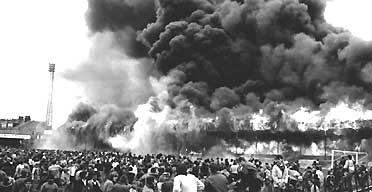Nothing has changed….UKIP during the 2009 Euro elections was being smeared as racist:
Dear Mr. Thomas,
Complaint UKIP broadcast on the Today programme at 7.32am on May 30, 2009
The interview, by the standards of others broadcast during the European Parliamentary elections, as unfairly and relentlessly negative towards the party and gave undue prominence to claims that its policies were racist.
John Humphrys suggested that they would “scrap with the BNP” for votes, a direct insinuation that the party had racist policies. This was exactly in line with what UKIP’s opponents wanted to project about the party. Mr Humphrys could have asked tough questions about immigration without pushing into the territory of racism at all.
This morning Today had a little chat about UKIP (08:21) and what should be done to avoid giving them ‘victim status’ (and the subsequent voter appeal) and the impression that they are being bullied by the big political parties and media….asking why the Public still supports them despite the ordure heaped upon them….the conclusion…it is because the Establishment is seen as out to get them….and this interview doesn’t dispel that.
UKIP supporters are dismissed as ‘believers’ by Evan Davis….so not reasoned, thoughtful people…but merely driven by a sort of blind religious fanaticism?
The conclusion was don’t concentrate on what UKIP actually stands for, limiting EU power and immigration, but denounce them for their apparently incompetent economic policies….as opposed to the competent policies of….?
The Spectator’s Isabel Hardman typified the deceitful approach to talking about immigration that is now adopted by politicians and the media….‘OK yah it’s good to talk about immigration, absolutely essential…….but aren’t UKIP, and anyone who does talk about immigration, racist?’
Hardman came up with a classic of hat ilk this morning (08:21)….we mustn’t say talking about immigration is racist but….UKIP’s posters were so mean spirited and xenophobic.
…that was despite in the same sentence saying Labour MP Mike Gabe’s declaration that the posters were racist was daft…..70% the Public didn’t think the posters were racist she said….so his party must have been dismayed to hear him say that they were…..Not an ideal strategy to say the public are racist if you want to appeal to them…..politicians aren’t engaging with the public’s concerns and have insulted voters (by calling them racist) for many years.
And yet Hardman states those views are ‘mean spiritied and xenophobic’ herself.
Just another Today programme UKIP smear about the UKIP ‘problem’ as they see it dressed up as reasoned debate.
Hardman is hardly someone who is a natural UKIP supporter:
Here’s another example of the stupidity and double dealing of the chatterati:
Nick Cohen in the Guardain says:
Instead of tearing into the preposterous Ukip leader, Britain’s famously aggressive media have made him a celebrity
Cohen then goes on to do that very thing…tear into UKIP……
[Farage] says he represents “ordinary people”. But he is a public school-educated former banker, whose policies will help him and his kind. He claims he is the voice of “common sense”, while allying with every variety of gay-hater, conspiracy crackpot, racist, chauvinist and pillock. The only sense he and his followers have in common is a fear of anyone who is not like them. [Yes…so afraid of foreigners that Farage married a German…and UKIP does employ many foreign staff]
When considering Ukip…… For all the bombast, they would think that, underneath, these must be civilised men with an ironic sensibility who might have been educated at Winchester………..”Actually, they’re a bunch of thugs.”
The same should be said of Ukip.
So Cohen says attacking UKIP is a bad idea…and yet Cohen couldn’t resist, just as Hardman couldn’t stop her superior moralising inner nanny coming to the surface.
Cohen finishes up with this complaint that the media created the bland politician and now complain about that blandness, but Cohen says that it is ‘sinister of [broadcasters] to promote fanaticism as a cure for the boredom it generates.’
So UKIP are ‘fanatics’ ….because they have views Cohen doesn’t agree with….isn’t he once again doing exactly what he complains of…..he hates that ‘difference’ that UKIP represents and attacks them as sinister and fanatical because of it….doing exactly what the media did to politicians, attacking their convictions and turning them all into bland copies of each other…the BBC’s effect on Cameron the most notable….always labelling the Tories the ‘nasty party’ and hence Cameron’s appeasement of them and the evisceration of his own party and its policies.



